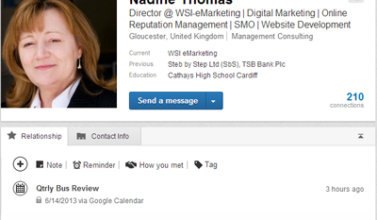
You’ve spent hours crafting your latest blog, Facebook post or Twitter campaign, but find yourself continually disappointed by the small number of people who seem to be reading and engaging with it. But how do you work out how many people are actually reading what you post? Are your content marketing efforts bringing returns?
The chances are, your audience is bigger than you think. A research project carried out by Facebook and Stanford University showed a large discrepancy between perceived audiences and actual audience size. It found that actual audience sizes tend to be four times greater per post than presumed. The reason for the discrepancy? Around 23% of people simply guess audience size, while 21% base their assumptions on the number of likes and comments they get for each post.
Silent participation
 Blogging experts Jackie Huba and Ben McConnell came up with the 90-9-1 Rule, which suggests that 90% of web users are observers, 9% are commenters and just 1% are creators. The implication here is that, while a small number of users may comment, press the like button or retweet your posts, the vast majority will simply read silently. The image to the left from Christopher Allen illustrates this nicely.
Blogging experts Jackie Huba and Ben McConnell came up with the 90-9-1 Rule, which suggests that 90% of web users are observers, 9% are commenters and just 1% are creators. The implication here is that, while a small number of users may comment, press the like button or retweet your posts, the vast majority will simply read silently. The image to the left from Christopher Allen illustrates this nicely.
Others have found slightly different ratios, including a 70-20-10 and a 55-30-15 split, although a 4-5% engagement ratio is relatively standard. Whatever the ratio, silent readers are always in the majority and those who engage are always in the minority when it comes to online communication.
Working out who’s reading your posts
There are various ways to analyse how many people are reading or commenting on your posts, depending on the site you are posting to. Here are some of the most common.
Tools like Hootsuite, Twitter’s own analytics and Tweetreach (as well as many more) can help you to find out how many times Twitter users saw your tweet as well as any click-throughs (including links, hashtags and username) as well as replies, favourites and retweets. Twitter will then work out the engagement rate;dividing the number of tweet viewers by the number of interactions.
Click Insights at the top of the page and total up your reach from recent posts and your engagement. Then divide the ‘engagement’ of your recent posts by the ‘reach’. For individual posts you can add up the likes and comments and divide these by the total number of viewers.
Blogs
Go to your analytics dashboard and find out how many unique visits your blog posts are attracting. Then find the number of comments. Divide comments by visitors to find the comment rate (if you’re using Google Analytics you’ll need to go to Behaviour and then Site content).
Increasing engagement rates in content marketing
While some readers will never choose to comment, like or join a debate, there are ways you can try to increase your engagement levels.
1. Invite readers to voice their opinions or to subscribe to your blog
To be effective here don’t forget to monitor and respond appropriately. There’s no point in inviting comment or debate if you are never seen to respond.
2. Find out where your audience is
I don’t just mean which social media they use. We have many people who read our blogs from our newsletter links. Don’t forget about email.
3. Be consistent
Posts should be regular and relevant so readers know they will have something new to come back and read.
4. Be honest
There’s no quicker way to turn people off than not delivering what you’ve promised. Sensationlist headlines promising things that are not contained in your posts will only result in mistrust. Worse still are posts that promise information but turn out to be a sales pitch.
After all that, remember, there will always be people who will only ever read your posts without interacting. So, don’t just rely on the comments and likes when measuring the success of your content marketing; it’s likely to be attracting a larger audience than you think.
If you’ve got any other tips to increase engagement levels within content marketing, why not share them with our readers?
If you want help with your content marketing, get in touch.
Image Copyright: lculig / 123RF Stock Photo
Related Post
What’s the single...
Adam Vincenzini from Comms Corner recently posted a very good article which I think goes...
- January 25, 2011
- By Rob Thomas
- Blogging
Content Sharing Via Social...
Target marketing to meet your business goals Is your business using social media channels...
- June 15, 2011
- By Nadine Thomas
- Digital Marketing
Brilliant Business Blogging
Blogging has long evolved from just being an ideal platform for enthusiasts and budding...
- August 9, 2011
- By Rob Thomas
- Blogging
Can you get help to fund your...
If you need a new website, it’s possible that you could get help towards the cost....
- May 30, 2013
- By Rob Thomas
- Digital Marketing
10 Best Ways to take...
Others may have seen a pop-up ‘invitation to upgrade’ message when they accessed...
- June 1, 2013
- By Rob Thomas
- Digital Marketing
Google Hangouts – 6 Ways...
Google+ was launched just 2 years ago in June 2011. In the first 6 months of its...
- June 24, 2013
- By Nadine Thomas
- Digital Marketing











Leave a Comments